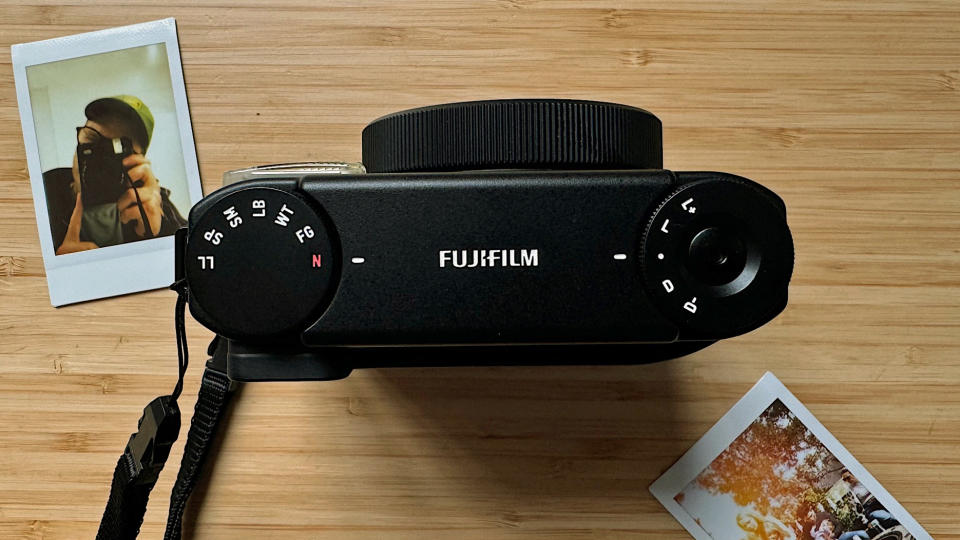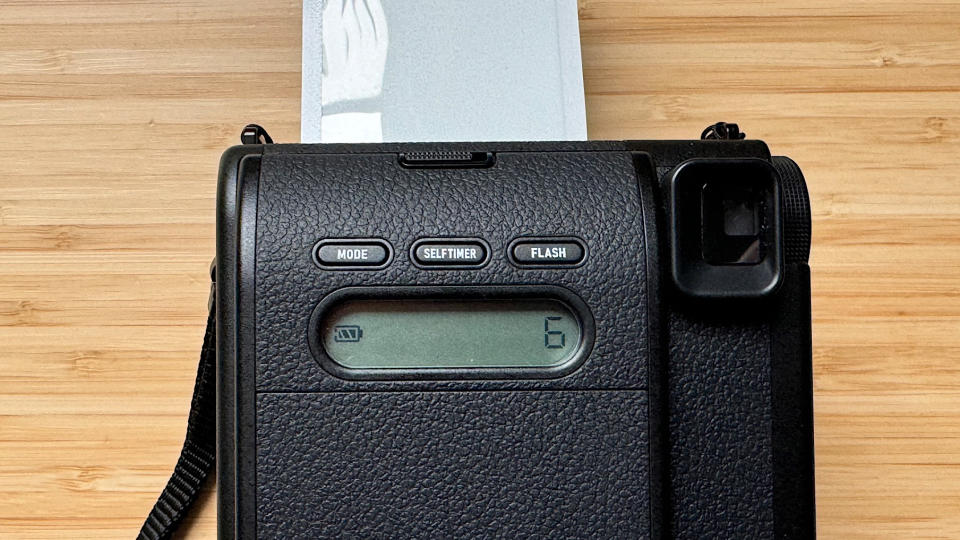Fujifilm’s Instax cameras have been around for a while. They offer instant photo printouts in cute frames, taking over where Polaroid left. Over the years, the company has experimented with pastel colorways, retro styles, hybrid digital and manual photography, and even collaborations with Pokèmon and Taylor Swift.
The new Instax mini 99, which was released this month, comes in black. It looks more like my X-T2 and other Fujifilm models than a Polaroid. From a distance, it looks like a pricey digital camera, although it costs only $200. When you get to handle it though, you might be a little disappointed by the plasticky build. Still, there are parts where Fuji has lavished the camera with machined elements, like a tripod stand converter and some of the controls.
With a matte finish, the Instax mini 99 looks more professional, even cooler, than most of its predecessors. While there are no hybrid digital camera features, it delivers far more versatility than pretty much any other instant camera.


There are a lot of controls here for an instant camera, including three shooting options with different focal lengths. You twist the lens to switch between landscape, macro and standard settings, and each is (fortunately) labeled with a distance marker so you can best eyeball your shot. While there is a viewfinder, it won’t scale based on your shooting mode. Again, let’s not forget this is an instant camera. Having said that, with the mini 99 you do get access to filters and some basic exposure options.
Those filters attempt to strike those nostalgia chords. Normal is your typical shooting mode, and there’s faded green, soft magenta, light blue, warm tone and of course, sepia.
Light leak, meanwhile, sort of messes up your shots with LEDs built inside the camera, adding a burnout effect to your photos as they’re captured. What impressed me further were even more shooting modes, adding the ability to capture double-exposure shots, a manual vignette switch – which was nearly always on when I was shooting – and even fill-in flash, red-eye removal and automatic flash options. There’s also a sports mode that attempts to avoid blur when capturing moving subjects. Photos weren’t pin-sharp, but the mode seemed to capture things a little bit more crisply than in auto mode.
It’s an awful lot for an instant camera, and I found half the fun was in experimenting with modes and shooting effects. While I wouldn’t go so far as to call each shot a risk, it’s been so long since I’ve used film of any kind that each time I reached for the shutter button (of which there are two), I tried extra hard to nail framing and composition – probably more than I would with digital.
A lot of the shots I took (at a family birthday party with constantly moving babies and toddlers) were in ideal sunny outdoor lighting, but when I was indoors or areas with less light in general, I leaned heavily on the flash, which muddied a lot of the photos.


The learning curve is a bit steep if you haven’t owned an Instax over the last decade(or three). Each messed-up shot is roughly a dollar down the drain. But with each attempt, you begin to gauge lighting and focal distances better. An hour and ten photos later, I got nice shots of my nieces’ birthday party, even catching them looking at the camera on a few instances. Some photos I seemed to nail the correct focal distance, but that was the exception rather than the rule. Fortunately, half the appeal is off-focus moments, off-center framing and other happy accidents. I chose to apply a light leak effect – why would I complain if it’s not as pin-sharp as my iPhone 15 Pro?
There are a few things I’d love to see Fujifilm tackle if it attempts to make another premium Instax mini. First, add a small mirror for taking photos of yourself with the lens facing you. Many cameras offer a tiny mirrored surface so you can loosely tell you’re pointing in the right direction. One selfie attempt with my niece cropped her almost entirely from the shot. Also, to recharge the Instax mini 99, you must take out the battery and put it into the included charger with a USB cable. That’s too much of a hassle, and Fujifilm should offer a simpler method in future. Fortunately, I didn’t ever need to recharge the camera as I captured over 20 shots.
The Instax mini 99 uses the same smallish Instax film as other models, but with more controls, options and effects, it delivers on its attempt to be the premium instant camera. The film is still expensive, yes, and the device feels a little cheap for the price, but ultimately it delivers satisfying instant photo moments.

